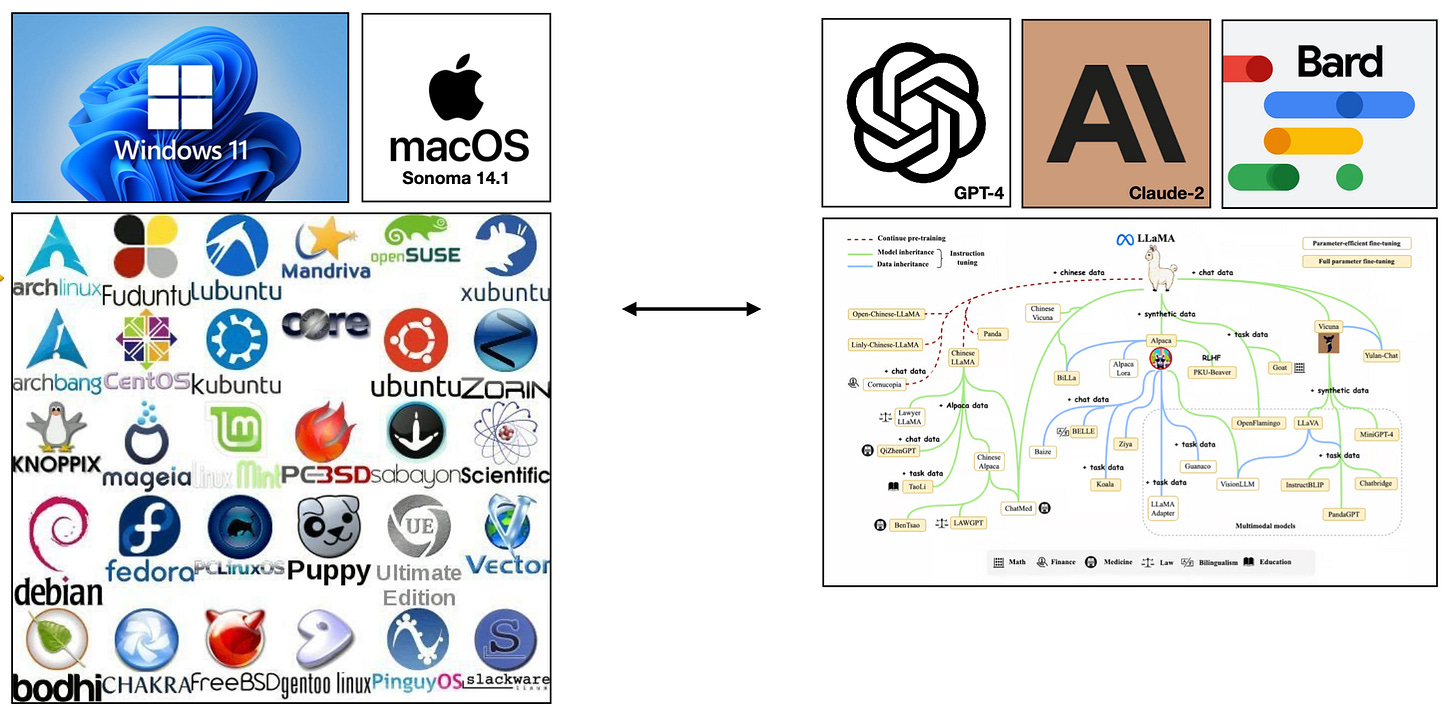The world of LLMs is on the cusp of a significant transformation, but this isn’t a new story. Transformations (or Transformers :P) have become a common occurrence in the last couple of years in the AI industry.
What the future might look like and what Venture Capitalist should consider?
Transformation with large language models (LLMs) and why they will emerge as potential cornerstones of a new operating system (OS) paradigm.
This article explores this exciting prospect, drawing parallels between traditional OS(es) and how LLMs might reshape our interaction with technology.
Beyond Chatbots and Word Generators: LLMs as Kernel Processes
Traditionally, LLMs have been viewed as chatbots or fancy text generators. However, a more accurate perspective positions them as the kernel process – the heart – of a nascent LLM OS. This kernel orchestrates various resources, including memory and computational tools, to tackle an array of problems.
AI agents
Current AI interactions are like a back-and-forth conversation. You give the AI a question (prompt), it processes it, and gives you an answer. This cycle repeats for every new request. Humans are always at the starting point.
AI agents are a different breed. They're built to be self-directed. You simply tell them the goal (research competition, book a table etc.), and they take it from there. They create their own to-do list and get cracking, using real-time data and their internal reasoning to make choices. It's like they can ask themselves questions and adjust their approach on the fly, constantly learning to achieve the best outcome.
Near future we will see a lot of these “Agent-based” (agentic) workflows and such agents come up. Most of these you may or may not have heard about, but surely will in a few years.
A Glimpse into the Future of LLMs (AI-OS)
To imagine it simply an AI OS / LLM OS of the near future:
Master of Text: It can effortlessly read, generate, and possess a knowledge base surpassing any single human across diverse subjects.
Information Alchemist: It can seamlessly browse the internet and access local files, performing retrieval-augmented generation.
Software Integration Wizard: It can leverage existing software infrastructure like calculators and Python through a process called retrieval-augmented generation.
A Master of multimodality: It can perceive and generate images and videos, understand and generate music, and even process audio input.
Long-Term Thinker: It can leverage its “system 2” to ponder over extended periods.
Adaptive Learner: It might demonstrate limited self-improvement abilities in specific domains with well-defined reward functions.
Customizable Powerhouse: It can be fine-tuned for various tasks – potentially with a thriving ecosystem of LLM experts akin to an app store.
The Power of Natural Language Interfaces
The LLM OS fundamentally transforms how we interact with computers. Instead of relying on complex menus and cryptic commands, we can leverage the power of natural language. This shift promises a more intuitive and user-friendly computing experience
Open vs. Proprietary: A Familiar Dichotomy
The analogy extends further, mirroring the current OS landscape. Just as we have proprietary systems like Windows and Mac alongside the open-source Linux ecosystem, the LLM OS space might see a similar dynamic.
Proprietary models like GPT and Bard could coexist with a flourishing open-source movement powered by LLaMA, exemplified by the rise of LLM projects based on the LLaMA framework.
We can already see how they are similar to existing offerings in the market:
Conclusion: A New Dawn for Computing
The emergence of LLM OS represents a paradigm shift in computing. By orchestrating a suite of tools and facilitating natural language interaction, LLMs have the potential to revolutionize the way we solve problems and interact with technology. This exciting development paves the way for a future where computing becomes more accessible and intuitive than ever before.
I personally can’t wait for this AI OS future, it will make mundane tasks easier and faster and even transform the way we think about work.
I hope you learned something interesting.
Please feel free to share if you have any questions / feedback. I’m at saharsh@oriosvp.com
“Artificial intelligence is not a substitute for human intelligence; it is a tool to amplify human creativity and ingenuity.”










References:
https://huggingface.co/blog/shivance/illustrated-llm-os
https://arxiv.org/html/2312.03815v2/#S5
https://x.com/karpathy/status/1723140519554105733
https://github.com/agiresearch/AIOS